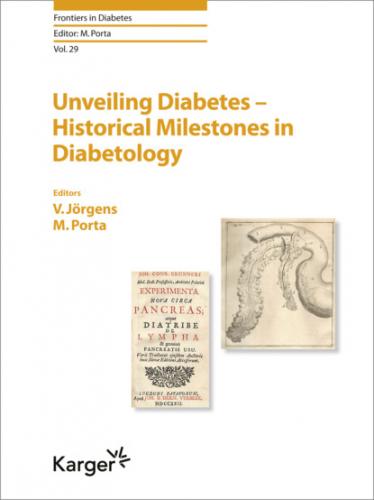A street in Wrocław commemorates the name of Oskar Minkowski (Fig. 11). The European Association for the Study of Diabetes has, since 1966, awarded the Minkowski Prize for outstanding contributions to the advancement of knowledge in the field of diabetes mellitus (Fig. 12).
References
1Luft R: Oskar Minkowski: discovery of the pancreatic origin of diabetes. Diabetologia 1989;23:399–401.
2Naunyn B: Gedanken, Erinnerungen und Meinungen. Munich, Bergmann, 1925.
3Minkowski O: Über das Vorkommen von Oxybuttersäure im Harn bei Diabetes mellitus. Naunyn-Schmiedebergs Arch<italic></italic>1884;18:35–55.
4Minkowski O: Untersuchungen über den Einfluss der Leberexstirpation auf den Stoffwechsel.<italic></italic>Naunyn-Schmiedebergs Arch 1886;21:41–88.
5Von Mering J: Über künstlichen Diabetes. Centralbl Med Wissensch 1886;22:31–33.
6Houssay BA: The discovery of pancreatic diabetes. The role of Oscar Minkowski. Diabetes 1925;1:112–116.
7Von Mering J: Über die Abzugswege des Zuckers aus der Darmhöhle. Arch Anat Physiol 1877:379–415.
8Von Mering J, Minkowski O: Diabetes mellitus nach Pankreasexstirpation. Zentralbl Klin Med 1889;10:394.
9Von Mering J, Minkowski O: Diabetes mellitus nach Pankreasexstirpation. Arch Exp Path Pharm 1890;26:371–387.
10Joslin EP: Pathology of diabetes mellitus. Boston Med Surg J 1894;130:330–334.
11Jörgens V: The roots of SGLT inhibition. Laurent Guillaume de Koninck, Jean Servais Stas and Freiherr Josef von Mering. Acta Diabetol 2019;56:29–31.
12Minkowski O: Über die Zuckerbildung im Organismus beim Pankreasdiabetes. Zugleich eine Entgegnung auf die wiederholten Angriffe von Eduard Pflüger. Arch Ges Physiol 1906;111:13–60.
13Moritz MS: Deutsche Kliniker um die Jahrhundertwende. Kommissionsverlag der Buchhandlung für Medizin. Cologne, Schumpe, 1958.
14Morawitz P: Eröffnungsrede des 44. Kongresses. Verhandlungen der Deutschen Gesellschaft für Innere Medizin. Munich, Bergmann, 1932, p 493.
15Jörgens V, Minkowski HO: Past masters: Oskar Minkowski (1858–1931). Diabetologia 2005;48:A7.
Dr. Viktor Jörgens
Fuhlrottweg 15
DE–40591 Düsseldorf (Germany)
Jörgens V, Porta M (eds): Unveiling Diabetes - Historical Milestones in Diabetology. Front Diabetes. Basel, Karger, 2020, vol 29, pp 51–57 (DOI: 10.1159/000506542)
______________________
Allen and Joslin and the Starvation Treatment of Diabetes
Allan Mazur
The Maxwell School, Syracuse University, Syracuse, NY, USA
______________________
Abstract
Shortly before the discovery of insulin, the prominent American physicians Frederick Allen and Elliott Joslin advocated severe fasting and undernutrition to prolong the lives of their youthful diabetic patients. Detractors called this “starvation dieting,” and indeed, some patients did starve to death. The public record contains only the briefest account of relevant animal experiments, and clinical experience at the time provided little indication that severe undernutrition had better outcomes than low carbohydrate diets then in use.
© 2020 S. Karger AG, Basel
Frederick M. Allen and Elliott P. Joslin were among the most prominent diabetes specialists in America during the first third of the 20th century. From 1915 until the introduction of insulin in 1922, they promoted what have been pejoratively called “starvation diets” based on repeated fasting and prolonged undernourishment, not as a cure, but for symptom relief and maximum extension of life [1].
Fasting did reduce glucose levels in diabetics, but prolonged calorie-restricted diets introduced new hazards, most obviously death by starvation, which Allen and Joslin euphemistically called “inanition.” It is accepted today that calorie restriction is beneficial for diabetics who are overweight. But for those of normal or lower weight, it was already understood in Allen’s time that severe calorie restriction could lessen resistance to infection, and for children it might stunt growth. The diet was unpleasant, difficult to maintain, and enervating, with the result that many patients withdrew from the regimen. Observers wondered if such privation was too high a price for a modest extension of poor-quality life. Joslin commented retrospectively, “We literally starved the child and adult with the faint hope that something new in treatment would appear... It was no fun to starve a child to let him live” [2].
Allen’s most famous patient was Elizabeth Hughes, the daughter of Charles Evans Hughes, Governor of New York, Republican candidate for the presidency in 1916, and finally Chief Justice of the US Supreme Court. Elizabeth developed diabetes in 1919 at age 11 years, her height then was 4 ft 11.5 inches, her weight 75 lb. She was treated initially by Dr. Allen who put her on a week of fasting followed by a diet of 500 calories daily with one fast day per week, bringing her weight down to 55 lb. Freed of glycosuria (sugar in the urine), her diet was raised to 1,250 calories, except on fast days, and her weight rose above 60 lb. At that time, most child diabetics died from coma within months to a few years of diagnosis [3]. It is difficult to judge how much Allen’s regimen prolonged Elizabeth’s life. She disliked the treatment as well as Dr. Allen, but she adhered to the diet with oversight from her nurse companion.
Although an exemplary patient, Elizabeth deteriorated seriously by the winter of 1921/22 when she weighed 45 lb. Her mother pleaded with Canadian doctor Frederick Banting, a recent discoverer of insulin, to include Elizabeth as a trial patient. Marvelously successful, Elizabeth regained weight and later graduated from Barnard College. She married, had 3 children, and was
